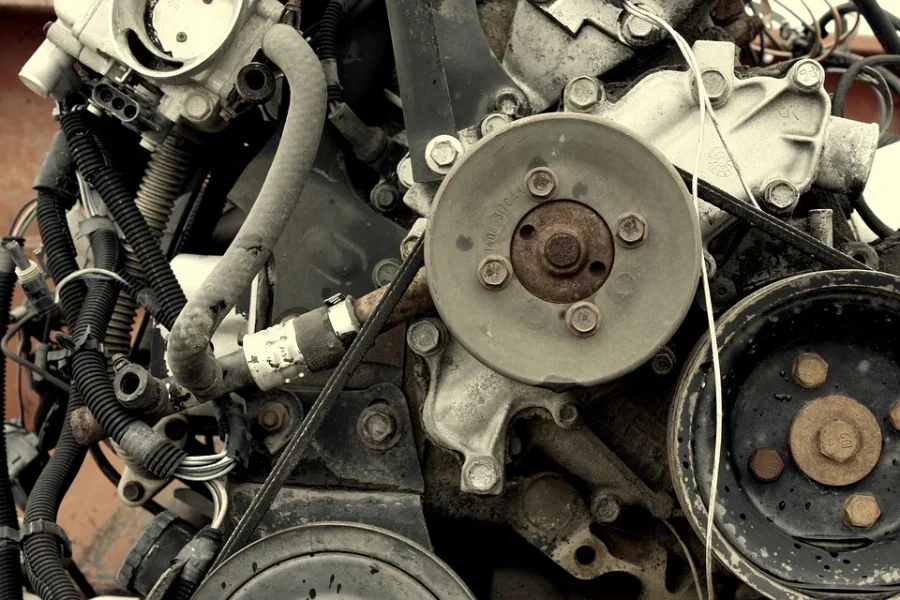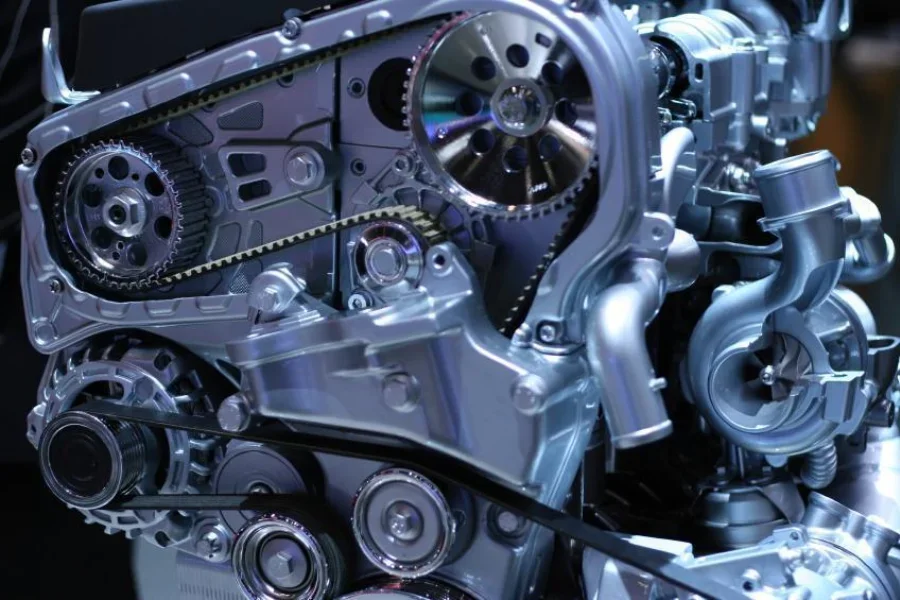Timing belts are necessary components vehicles need to operate, and they’ve received various updates over the years. However, their costly nature makes many car owners reluctant to replace them, and opt for quality ones when they do.
As a result, retailers must ensure they offer effective timing belts, proving to consumers that it’s worth the purchase. This article will discuss how retailers can stock up on premium timing belts to attract car owners in 2023.
Table of Contents
Overview of the automotive timing belt market
What do timing belts do in an automobile?
Why should sellers avoid faulty timing belts?
What are the signs of a broken timing belt?
Five factors to consider when choosing a timing belt
The bottom line
Overview of the automotive timing belt market
The global automotive timing belt market was valued at US$ 7.8 billion in 2020 and is expected to grow at a 5.9% compound annual growth rate (CAGR) from 2022 to 2030. This industry is primarily driven by the increasing focus on enhanced fuel economies, increased engine efficiency, growing vehicle-in-operation, increased average miles traveled, AI (Artificial Intelligence) integration, data mining permeation into timing belt systems, and the expanded emission guidelines across the globe.
Other significant propellers for this market’s growth include innovators introducing new products and growing research development activities. The passenger car segment had a substantial share of the market revenue in 2021 due to the growing demand for passenger cars and the surge in sales for commercial vehicles worldwide.
According to OICA, in 2020, 26,365,470 vehicles were sold or newly registered, which is a 5.6% year-on-year growth. Asia Pacific emerged as the dominant region in the global market in 2021, accounting for more than 40% of the worldwide market revenue share. Factors responsible for this feat include the increasing demand for automotive vehicles coupled with the growing aftermarket in the continent.
What do timing belts do in an automobile?

Timing belts are components used in internal combustion engines, helping to synchronize the movement of crankshafts and camshafts. They have designs featuring hard teeth that interlock with the engine’s cogwheel, opening and closing valves accurately for a smooth operation.
Although some cars and trucks utilize gears or timing chains, timing belts made from rubber offer quieter and more efficient performances. Plus, they don’t need lubricants to operate.
Why should sellers avoid faulty timing belts?
Non-interference and free-running engines were popular for older vehicles. These engines separated the pistons and valves, preventing them from occupying the same cylinder.
However, most recent engines allow pistons to build more compression, generating more power and higher efficiency. What separates modern engines from their predecessors is that the valves and pistons will occupy the same area when certain conditions are met.
Broken timing belts would cancel the synchronization between the crankshaft and camshaft. While free-running engines would suffer reduced engine power or irreversible damage, that’s not the case with interference variants.
Instead, faulty timing belts would open the valves more than necessary, allowing the piston to strike and cause fatal damage to internal components. Unfortunately, the damage incurred can be costly and may even require engine replacements or a new car as a less expensive alternative.
What are the signs of a broken timing belt?
Unfortunately, timing belts don’t show any symptoms before failing. Occasionally, they may show minor signs, like ticking sounds coming from the engine. Nevertheless, car owners may easily overlook them or find the symptoms tricky to diagnose (multiple issues can generate engine-related sounds).
In most cases, timing belts will snap without warning, making it necessary for car owners to replace them according to their manual’s recommendations. Timing belts can last anywhere between 60,000 to 90,000 miles. So anything after that is a risky gamble.
Five factors to consider when choosing a timing belt

Material
Timing belts come in various materials, each offering different specifications for several applications. Neoprene fiberglass is one durable material often used for timing belts.
These belts offer longer shelf life due to their UV resistance, chemical resistance, and dimensional stability features. In addition, since neoprene fiberglass belts possess impressive resistance, they’re perfect for corrosive environments.
Other materials to consider are polyester and kevlar. These offer unbeatable shock resistance. However, most products reinforce polyester and kevlar with other materials, making them more robust, durable, and flexible.
Due to their excellent shock absorbance, polyester and kevlar timing belts are the go-to for engines utilizing high-level intermittent shock loading.
Lastly, urethane is another notable material for timing belts. It provides slow elongation rates while offering incredible tensile strength.
Since urethane has unrivaled dimensional stability, it can endure harsh and extreme temperatures (high or low). However, urethane belts are poor at preventing electrical charge accumulation, which means they are not static conductive.
Speed and dimension
Besides considering the materials,businesses should also consider speed and dimension before choosing timing belts. Such properties influence how smoothly or fast the equipment will operate.
For example, belt width determines the products’ apparent magnitude of tracking force. As a rule of thumb, wider timing belts will always have higher tracking force. In addition, length also has a significant influence.
Shorter timing belts can also provide greater tracking force due to the close connection between tensile cords and belt molds.
Pulley diameter is another characteristic to consider. Creating greater tracking force requires using timing belts on small-sized pulleys. For this reason, the pulley diameter must be broader than the belt.
Additionally, gravity’s pull can cause belts to sag terribly, mainly when applied to vertical shafts. However, car owners can avoid this with enough belt tension during installation.
Finally, belt installation tension is another crucial characteristic. It relates directly to the effect of differed torque loads accumulated by the tracking belt.
Environmental impact
Although timing belts may look strong, they’re fragile and can be affected by their operating environment. More specifically, the environment can stop synchronous operation if car owners ignore this factor.
One concern is the potential of objects falling on the timing belt. Such situations are bad for the product as they can slow down its functions.
While dust is easy to ignore, it can accumulate and cause more significant problems for timing belts. For instance, dust accumulation can affect the timing belt’s framework, bearing, and shafting.
Water is an eternal enemy of electrical equipment, and timing belts are no exception. Even light contact with moisture or liquids can lead to swelling and increased belt tension.
Functionality
Function matters when selecting timing belts, but it depends on where the target consumers want to use the equipment. Retailers should consider if their customers use timing belts as replacement parts for vehicles, material handling, robotics, or thermal subsystems.
Not all timing belt materials can work with all industries. As a result, retailers must confirm their target’s applications before stocking up on specific timing belts.
Design
While retailers must ask various questions before choosing timing belts, things should be simple, and they can ask themselves a few simple questions.
For starters, does the equipment require high precision? Will it need constant service and support? Do consumers want to control the timing belt’s life cycle? Must the timing belt have the brand’s name?
Retailers with positive answers to these questions may prefer to opt for customizable timing belts. Otherwise, they can go for traditional designs.
The bottom line
Timing belts are so critical that slight mishaps in replacement quality may lead to severe engine damage. For this reason, retailers must ensure their timing belts are of state-of-the-art quality and won’t create any problems for the driver until the expiry date.
Luckily, they can accomplish this by following the guidelines discussed above. Sellers must also ensure they offer products for the proper situations and with zero physical deformities to keep consumers happy in 2023.



